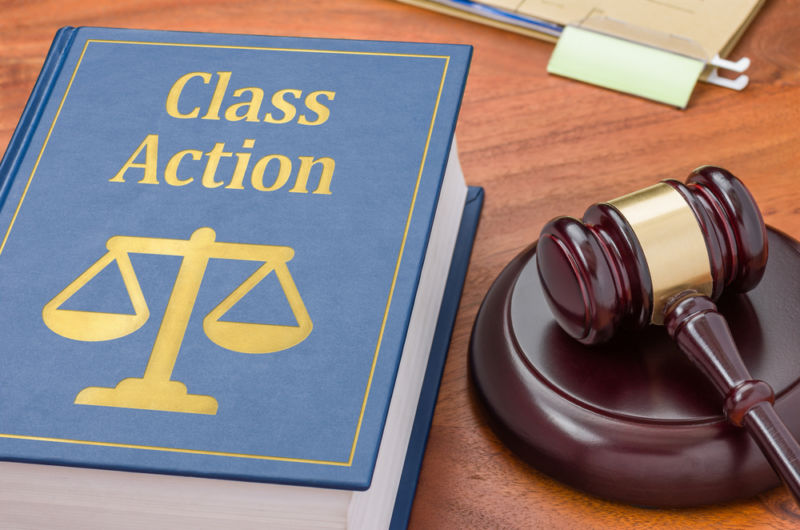Comprehending Class Activity Legal Action: An Overview for Attorney
Course activity claims have actually ended up being an integral part of the lawful landscape, permitting the loan consolidation of multiple cases into a solitary activity. For attorneys, comprehending the ins and outs of class action litigation is crucial in effectively representing their customers. This thorough overview checks out the fundamentals of course activity claims, from determining potential course participants to navigating the certification procedure. Furthermore, it explores vital methods for handling class activity litigation and provides understandings into discussing and acquiring authorization for settlements. By diving into the intricacies of course activity claims, this guide outfits attorneys with the knowledge and devices needed to effectively navigate this complicated area of legislation.
The Essentials of Class Action Claims
Class activity legal actions are a legal system employed to combine comparable claims from a group of individuals right into a solitary suit, supplying a cost-efficient and efficient method to looking for justice and resolution. This kind of lawsuit enables a depictive complainant, acting upon part of the entire class, to bring a claim against an accused that has actually presumably triggered damage or went against the civil liberties of multiple individuals.
The basic requirements for bringing a class action claim consist of numerosity, commonness, typicality, and adequacy of depiction. Numerosity describes the reality that the course must be so large that joinder of all members would be impractical. Commonality means that there should prevail concerns of legislation or truth that are shared by all members of the class. Typicality requires that the claims of the depictive complainant are regular of the cases of the whole class. Adequacy of depiction makes sure that the representative plaintiff will properly represent the passions of the whole class.
Class activity claims can be beneficial for both plaintiffs and offenders. For plaintiffs, it permits them to pool their resources and share the prices and risks related to lawsuits. When they are up against huge corporations or entities, it additionally offers a degree playing field. For offenders, it provides the possibility to efficiently settle several cases in a single legal action, avoiding the demand to defend versus countless private legal actions.
Identifying and Assessing Potential Class Members
After establishing the basic needs for a course activity legal action, the following step is to recognize and analyze potential class participants. This procedure includes identifying that might be component of the class and evaluating their insurance claims to determine if they satisfy the necessary requirements.
To determine prospective class participants, legal representatives normally conduct considerable research study and collect pertinent information. This may include assessing documents, carrying out interviews, and examining documents to identify people or entities that might have been affected by the alleged wrongdoing. It is essential to establish a clear and extensive list of prospective class participants to make certain that all influenced events are consisted of in the legal action.
When prospective course members have actually been identified, the next action is to analyze their claims. If they satisfy the legal demands for class accreditation, this involves examining the merits of each private claim to figure out. Lawyers need to carefully examine the facts, evidence, and lawful theories of each prospective course member's insurance claim to make certain that they have a practical instance.
Assessing prospective course members likewise includes determining whether they meet the course interpretation and have experienced comparable harm as a result of the accused's activities. This requires comparing the truths and conditions of each potential class member's circumstance to the claims and lawful theories put forth in the suit.
Browsing the Course Qualification Refine
To successfully navigate the class accreditation procedure, legal representatives have to diligently follow the procedural demands established forth by the court. Course accreditation is a critical step in a class action suit, as it identifies whether a situation can proceed as a course activity, standing for a team of people who have similar cases against an offender. The process involves satisfying particular requirements, such as numerosity, commonality, typicality, this link and adequacy of representation.
First of all, lawyers have to develop numerosity by demonstrating that the course is so big that individual joinder is not practical. This needs an extensive evaluation of the insurance claims and defenses entailed.
Next, lawyers need to show typicality, which suggests that the representative plaintiff's insurance claims are typical of the cases of the class participants. This guarantees that the interests of the depictive complainant straighten with the passions of the class. Attorneys should demonstrate competence of depiction, implying that the depictive complainant and their counsel will rather and appropriately represent the passions of the class.
To navigate this procedure successfully, attorneys have to thoroughly prepare by carrying out extensive research study, collecting proof, and developing a compelling disagreement that pleases each of these standards. They should likewise be prepared to react to any kind of challenges or objections elevated by the defendant. By vigilantly adhering to the step-by-step demands established forth by the court, legal representatives can increase their chances of acquiring class accreditation and progressing the passions of the course participants.

Trick Techniques for Taking Care Of Class Action Lawsuits
Upon successfully navigating the course certification process, legal representatives must then execute key strategies for effectively managing course action visit this web-site lawsuits. These techniques are essential to make sure that the instance proceeds smoothly and effectively, eventually maximizing the possibilities of a positive end result for the course members.
One key technique is to develop a solid and cohesive lawful group (Class action lawsuit). This involves putting together a group of attorneys with know-how in course activity lawsuits, along with various other pertinent locations such as the details sector or subject involved in the case. A versatile group can bring various viewpoints and abilities to the table, improving the general efficiency of the lawsuits
One more essential technique is to develop a extensive and well-thought-out lawsuits strategy. This plan ought to outline the overall purposes of the instance, in addition to the particular legal concepts and debates that will certainly be gone after. It ought to also include a timeline and spending plan to make sure that the situation remains on track and within the allotted sources.
Furthermore, attorneys should proactively engage with the class participants throughout the litigation procedure (Class action lawsuit). This consists of offering normal updates on the development of the case, looking for input and comments from the course participants, he said and attending to any type of concerns or concerns they may have. By cultivating open communication and cooperation, attorneys can build depend on and support amongst the class participants, which can be important in attaining a successful resolution
Resolving Class Activity Lawsuits: Arrangement and Approval
When it pertains to settling course activity suits, reliable negotiation and acquiring authorization are necessary steps in accomplishing a resolution. Class action legal actions are complex and include a lot of plaintiffs, making it vital to reach a settlement that is reasonable and acceptable to all parties included.

As soon as a negotiation agreement is reached, it must be approved by the court. The court's function in this process is to make sure that the negotiation is reasonable, reasonable, and properly safeguards the rate of interests of the course members. The court will think about aspects such as the nature of the insurance claims, the stamina of the proof, the prospective healing for the class members, and any objections raised by course participants.
Acquiring court approval is important as it offers finality to the settlement and protects the interests of the course participants. It makes sure that the settlement is binding and enforceable, and class participants can obtain their rightful payment.
Final Thought

Course action legal actions have become an indispensable part of the lawful landscape, allowing for the consolidation of several claims right into a single action. Course accreditation is a critical step in a course action legal action, as it identifies whether an instance can proceed as a course activity, representing a team of people who have comparable claims against an offender. By vigilantly sticking to the step-by-step requirements established forth by the court, legal representatives can enhance their chances of obtaining course qualification and advancing the rate of interests of the course members.
The court will take into consideration elements such as the nature of the insurance claims, the strength of the proof, the possible recovery for the class members, and any objections raised by class members.
By determining and examining potential class participants, lawyers can figure out the stability of a course activity legal action.
Comments on “Strength in Numbers: Discovering the Impact of Class Action Lawsuits”